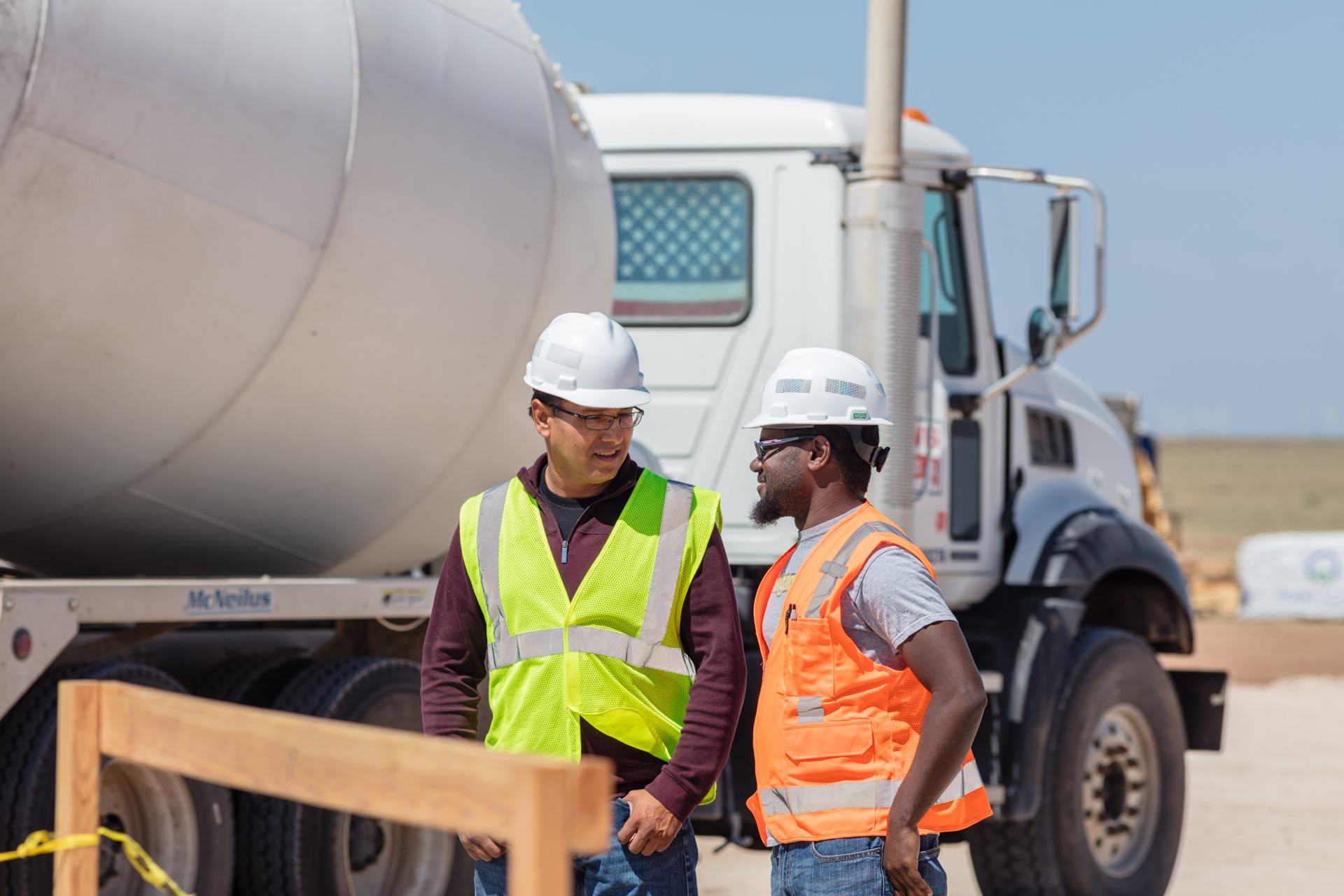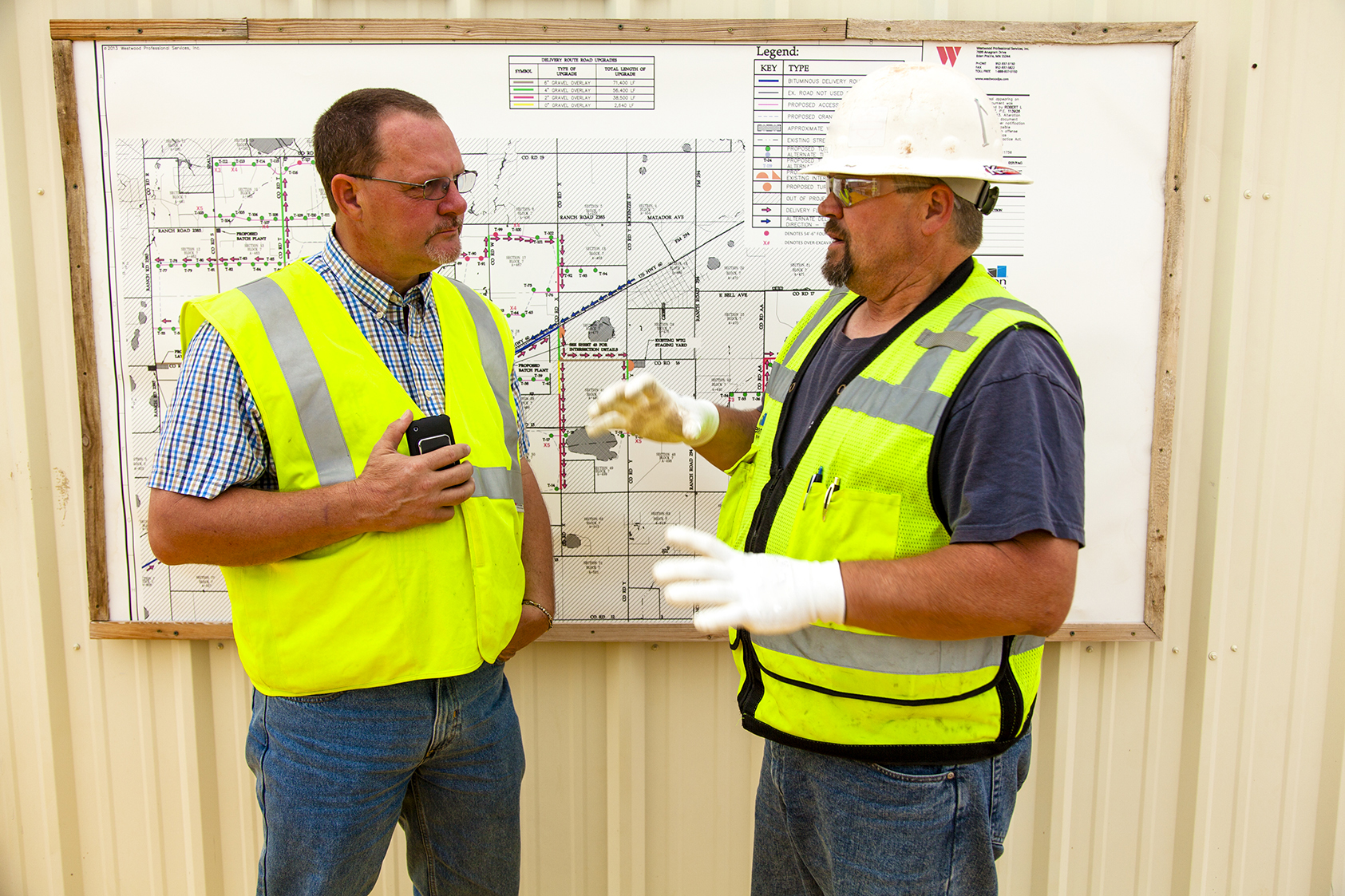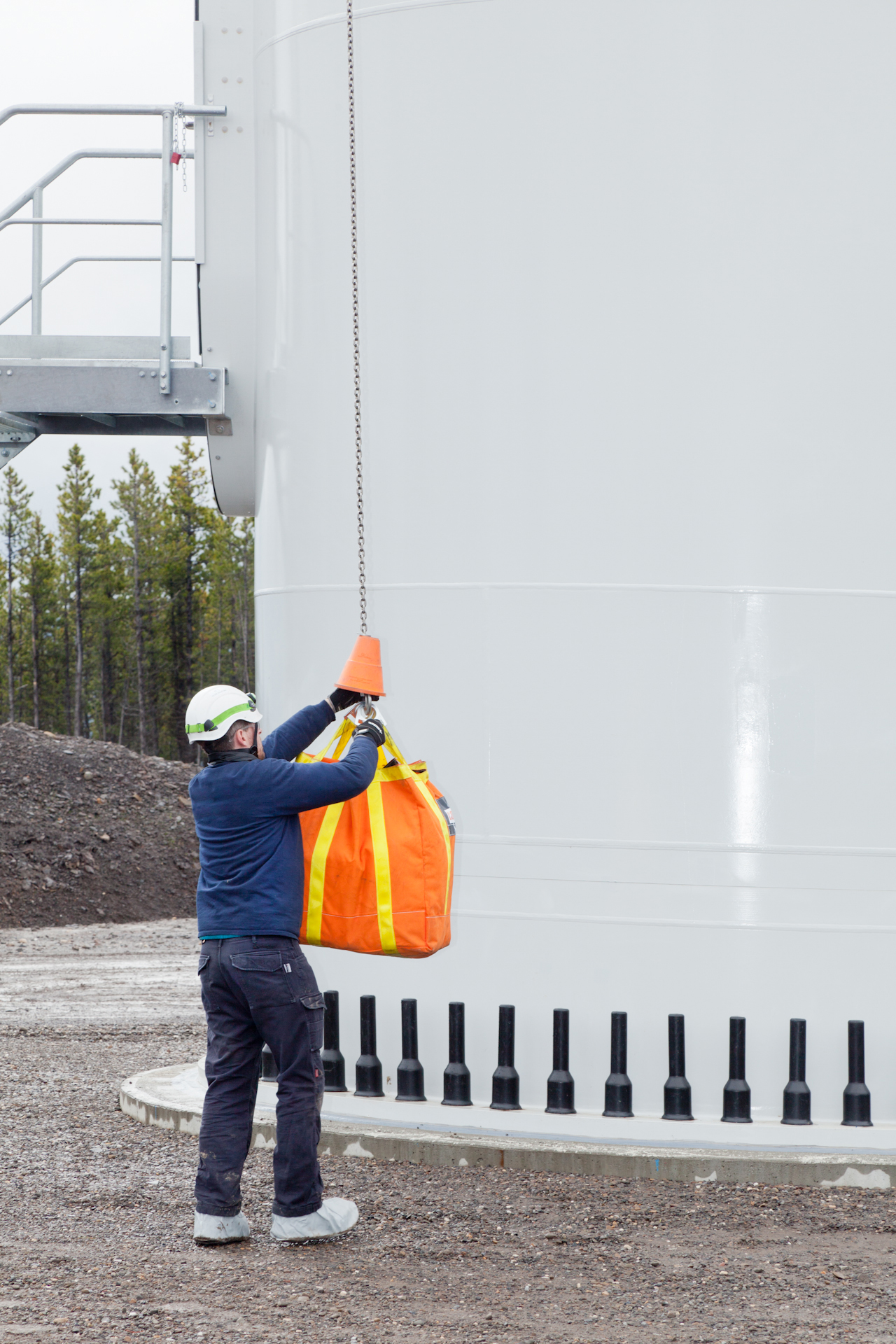Safety is a big deal at workplaces across the country, but especially ones that have a lot of moving parts. Renewable energy facilities are a great example of workplaces with many different types of tools, equipment, and machinery and safety measures to match.
As the Senior Environmental Health and Safety Manager at Pattern Energy, Joe Card has kept safety top of mind throughout his career.
“As I started working in different industries, safety became more and more important to me. At one of my previous jobs, I was invited to join the Joint Health and Safety Committee and that’s what really got me interested in it and making sure everyone around me was being safe,” he explains.
At Pattern, Joe is responsible for ensuring that anyone involved in working on a project is following all the safety policies and procedures the company maintains to protect the health of staff and visitors.

Keeping Contractors Safe on Site
“I spend a lot of time making sure that contractors are providing good site safety plans for our projects, leading the team, and teaching them the values and the way that Pattern works and making sure that our expectations are being carried through to the new projects that are happening,” he says.
Joe’s goal is to help everyone understand why safety is important and how everyone can take an important role in ensuring workplaces are safe for everyone.
“Pattern as a whole inspires all our contractors to be as safe as possible. Third-party contractors that we hire need to meet minimum safety standards, and their subcontractors have to meet them as well,” he explains.
Before work begins on a project, all contractors are brought up to speed on what’s required.
“We work with contractors to ensure that they’re meeting our minimum standards by giving them a P1 document which outlines everything. They take our standards and add in any that they have, then combined they create the Site Safety Plan. You can go to any Pattern site and they’ll all be very similar in terms of safety,” he explains.
When it comes to safety during the development phase of a new project, Joe’s team has launched an initiative to ensure that workers are properly trained and certified for a variety of tasks and situations.
This process extends to work on sites that are still under evaluation for potential development. Whether a contractor is setting up a meteorology tower or conducting geological surveys, they need to provide a range of documentation of their emergency response plans, job safety analysis protocols, and more. It is important contractors arrive with the right safety equipment for the kind of work they will do, and that their teams are appropriately trained.
Safety on the Job
Of course, Pattern’s focus on safety begins with its own crew. Pattern employees receive training on how to be safe on site which is tailored to the type of jobs they perform.
An employee who typically works in an office but occasionally visits facility sites must take a ten hour training program. “This is more for our office staff who are going to meetings and just going to the trailers,” Joe explains. Employees working on site must complete a minimum of 30 hours of training. Many also must complete additional training.
“If they’re climbing up towers, they need working at heights training, tower rescue training, confined space training—it depends on what they’re doing,” Joe says.
Each development project and operating facility is subject to safety rules established at both the federal and local levels. To ensure consistent compliance across the fleet, the safety team strives to go above and beyond the minimum requirements.
“In some places like British Columbia, a tower is considered a confined space. But in other places, that’s not the case,” Joe says.

Coming for a Visit
Contractors and employees are trained and certified to be on site, but how does it work for visitors? Joe says there’s a plan in place for them, too.
“Visitors probably aren’t familiar with the site that they’re going to so we start off with a visitor orientation. This gives visitors an overview of the site rules and the emergency response in case something goes wrong and how that will play out. Visitors are required to stay with someone who has the full site orientation. We typically lend visitors PPE (personal protective equipment) to wear, like a hard hat, safety glasses, a vest, and work boots if they don’t have them. There might be some extra PPE that’s required, depending on which site you’re going to,” Joe explains.
Because Pattern sites can be found across North America, some may require a little more PPE.
“If you’re going out into long grass in an area that has snakes, we’ll give you some snake chaps and things like that,” he explains.
There is also a JSA for visitors to read—a Job Safety Analysis. Joe says this is provided by the contractor for anyone who is visiting a work site.
“This helps visitors understand what the hazards are at that location. Visitors are asked to stay within a safe zone while they observe the site. Work on the site will stop if visitors need to get closer,” he says.

A Culture of Safety
There’s a lot that goes into making sure everyone at work is being safe. From training to certifications, meetings, and reviewing policies and procedures, it can be a lot for contractors and employees to take in. But Joe says that everyone takes it very seriously.
“I’ve never worked for a company that puts safety so far forward as Pattern does. It’s not just a word here at Pattern, it’s a culture. When we’re hiring, we ask questions to evaluate whether we think someone will be a safe worker. Our facility managers are right on the ball when it comes to doing what’s right and doing it in compliance with the safety regulations for where they are located,” he says.
When it comes to getting involved, he says there are opportunities for staff to take on a collaborative role in how things are being done in regard to workplace safety.
“A Joint Health and Safety Committee is usually made up of staff and management. Generally speaking, they will meet monthly or every other month. They’ll talk about different things like reviewing any incidents or near misses, they’ll talk about what’s upcoming, what they can do differently, they can even make recommendations to management about PPE or hazardous substances or materials. JHSCs are legislated in Canada. In the US, there are a few states that don’t have one. But Pattern makes sure that each project has a JHSC,” he says.
Staff are invited to join these committees if they are interested in getting involved.